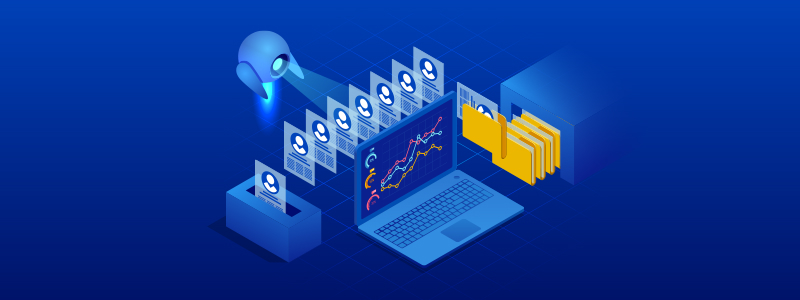In the ever-evolving insurance landscape, organizations must process and analyze vast volumes of data from multiple sources to gain a competitive edge, optimize operations, and improve customer experiences. However, extracting valuable information from unstructured insurance documents can be a daunting and time-consuming task.
Enter Astera ReportMiner – a powerful AI-driven data extraction tool that automates the process and unlocks the true potential of insurance data.
In this blog, we’ll explore how Astera ReportMiner is revolutionizing the insurance industry by automating the extraction of valuable information from unstructured documents. From improved claims processing to enhanced underwriting decisions, we’ll show you how this innovative tool is changing the game for insurers. So get ready to unleash the power of insurance data with Astera ReportMiner!
The Challenge of Unstructured Insurance Data
Despite being data-intensive, the insurance industry faces a significant challenge – unstructured data. This data comes in various forms, from policy documents to claim forms and regulatory filings. Unstructured data lacks a predefined data model, making it difficult to analyze and extract insights. This means that traditional data extraction methods are slow, laborious, and prone to errors. Analysts and data scientists have to manually sift through mountains of paperwork, manually inputting data and dealing with complex text formatting issues. This process is inefficient and often results in suboptimal decision-making.
Furthermore, insurance companies need to process and analyze data from various sources. These sources include internal and external databases, social media platforms, and third-party data providers. This data is often fragmented and disparate, making it difficult to integrate and analyze. As a result, insurers may miss out on valuable insights that could have a significant impact on their bottom line.
One example of unstructured insurance data is the claims process. Insurance companies must analyze and process a large volume of claim forms, accident reports, and other related documents. This is done to determine the validity of a claim and calculate the appropriate payout amount. These documents often contain a mix of structured and unstructured data, making the extraction process even more challenging.
Key Benefits of AI-Driven Data Extraction for the Insurance Industry
Improved Claims Processing
Claims processing requires the analysis of large volumes of claim forms, accident reports, and other related documents. With Astera ReportMiner’s AI Capture technology, insurers can automate the extraction of relevant data points, significantly reducing manual data entry errors and streamlining the claims process.
Enhanced Underwriting Decisions
Underwriting involves assessing risk and determining appropriate coverage and premiums for policyholders. By leveraging AI-driven data extraction, insurers can quickly gather information from various unstructured sources, enabling underwriters to make better-informed decisions based on accurate and up-to-date data.
Regulatory Compliance and Reporting
Astera ReportMiner simplifies regulatory compliance and reporting processes by automating the extraction of required data elements from complex documents. This ensures accurate and timely reporting.
Superior Customer Experience
Insurers can use AI-powered data extraction to better understand their customers’ needs and preferences. This allows them to tailor policies and services accordingly. By streamlining data management processes, insurance organizations can provide faster, more personalized services to their customers, ultimately enhancing customer satisfaction.
Enabling AI-driven Insurance Data Extraction with Astera ReportMiner
Traditional data extraction methods are slow, labor-intensive, and prone to errors, leading to inefficient processes and suboptimal decision-making. Astera ReportMiner’s AI technology automates the data extraction process, reducing the time and effort required to gather valuable information from complex insurance documents.
ReportMiner uses advanced algorithms and machine learning to identify relevant data points and extract them accurately and quickly. By utilizing its AI technology, ReportMiner can identify key-value pairs, tables, and other structures, as well as extract data from various unstructured sources, such as PDFs, TXT, JSON, RTF, and XLSX files. By leveraging these capabilities, insurers can unlock the full potential of their data and make better-informed decisions
Moreover, Astera ReportMiner’s AI-powered data extraction technology is customizable and adaptable. This makes it an ideal solution for insurance companies with diverse data extraction needs.
Additionally, the intuitive, code-free platform allows users to design pattern-based extraction templates for complex insurance documents, and the Auto-Generate Layout feature enables users to create a report model with a single click, without having to create data regions or fields manually. The Auto-Generate Table and Auto-Create Fields sub-components further enhance customization and allow for even more precise data extraction.
Don’t miss out on the opportunity to revolutionize your insurance data management processes. Request a free trial of Astera ReportMiner and experience the power of our AI Capture technology today!




